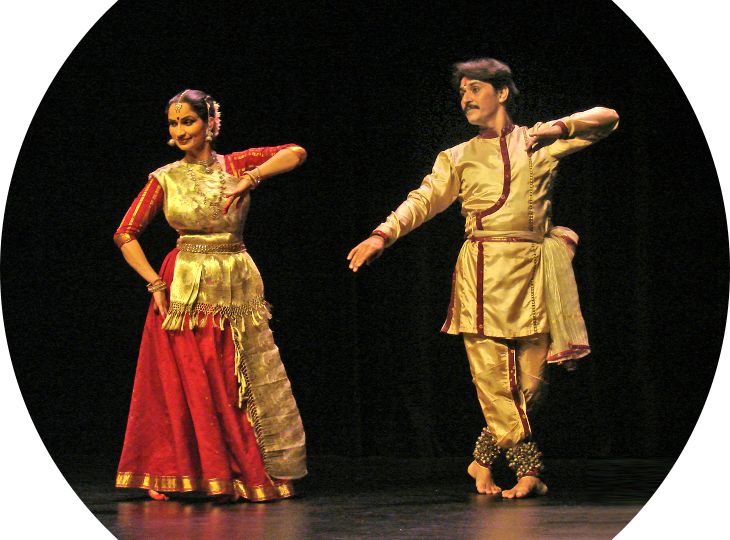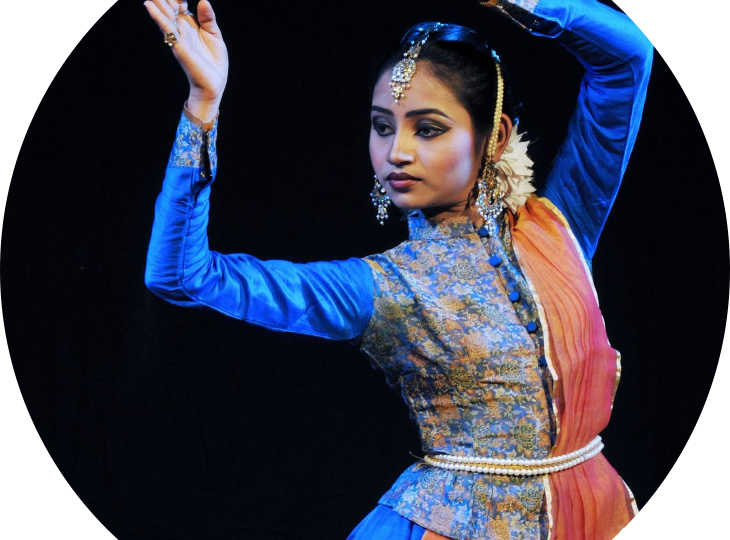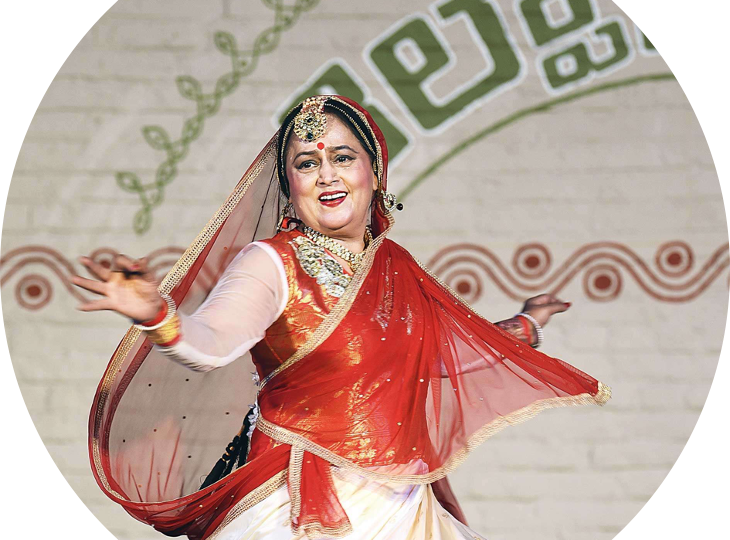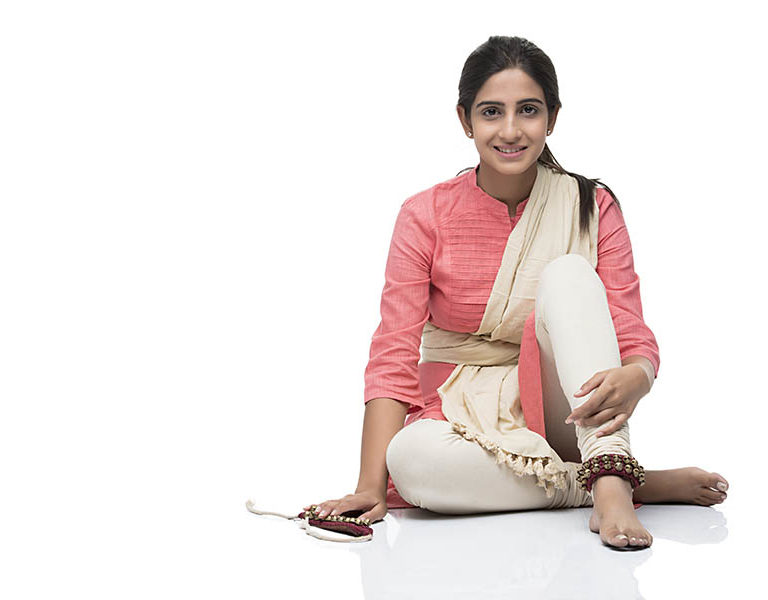COSTUME
The costume serves as a key identifier for the dance being performed.
In the present day, however, there are no set rules governing the costume in Kathak. Generally, women wear ghagras, or anarkalis while male dancers wear a kurta, and a langdar dhoti. Costumes that will captivate the audience and fit the tone of the performance are used. However, each gharana has its own preferred dress styles.

JAIPUR
Dancers wear churidar pyjama (leggings), sherwani (long coat like garment), cap, and tie a dupatta (scarf) from neck to waist.

LUCKNOW
Dancers wear churidar pyjama, kurta, and an embellished jacket.

BANARAS
Dancers wear flowing kurtas, or ghagras.
COSTUMES THROUGH THE AGES
ANCIENT ERA
Costume was based on the appearance of gods and goddesses. For different deities, different props, accessories and costumes were used. For example, for Krishna: skin had to be painted blue, yellow, green silk cloth, a string of pearls, golden bangles, and a peacock crown were worn.
mughal era
Wide topped trousers fitted from calf to ankle, long kurtas, fitted outer jacket, dupattas and sometimes high Turkish hats with veils were worn. Ghungroos or ankle bells were introduced during the Mughal Era.
rajput era
Men wore long angarkhas (tunics), churidars and turbans.
Women wore long lehengas (skirts), nose rings, bangles, a dupatta (scarf) was placed around the head and garlands were around in the hair.

PRACTICE (RIYAZ)
While practicing, a simple flared or straight kurta is worn, generally in white, but other colours are also fine.
